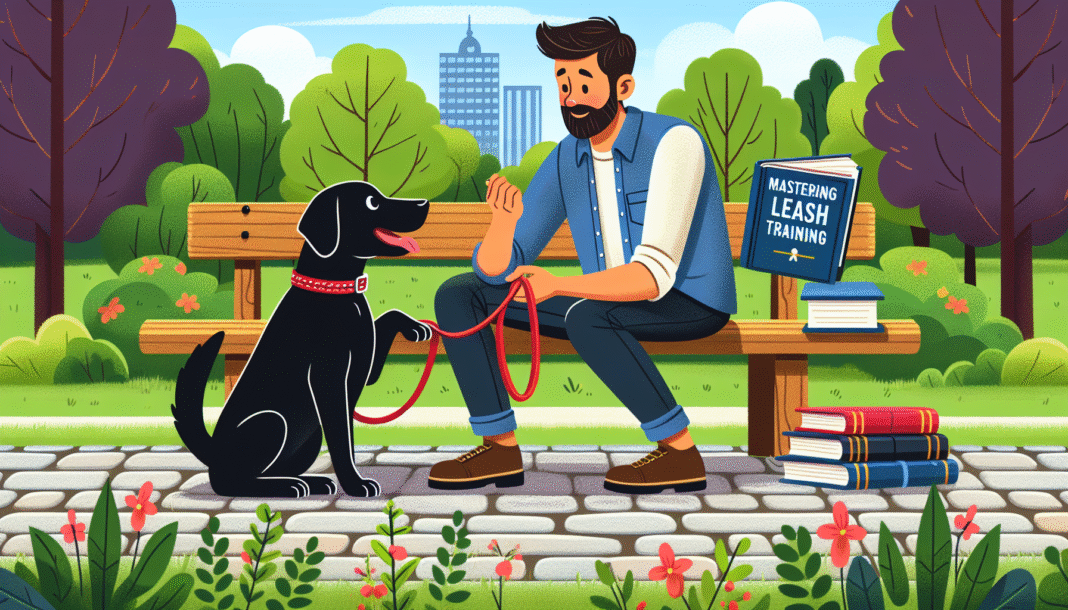Walking your dog should be a fulfilling experience for both you and your furry friend. However, an unruly pup pulling on the leash can turn a simple stroll into a challenging ordeal. In this guide, we’ll explore effective leash training techniques that enhance your dog’s behavior and promote your pet’s health and well-being.
Understanding the Importance of Leash Training
Leash training is about more than just convenience. It’s essential for maintaining your dog’s safety and ensuring enjoyable walks. A well-trained dog is less likely to pull you into traffic, lunge at other animals, or engage in unwanted behaviors when out and about. Additionally, proper leash manners promote your dog’s physical and mental health, allowing for structured exercise and socialization.
The Causes of Pulling on the Leash
Understanding why dogs pull on the leash can help you address the behavior effectively. Some common causes include:
1. Excitement
Many dogs become overly enthusiastic during walks. They may bounce, pull, or tug as they anticipate the sights, sounds, and smells of the outside world.
2. Lack of Training
Dogs often pull because they haven’t been taught proper leash manners. Consistent training is crucial for modifying behavior.
3. Instinctual Behavior
Certain breeds are more prone to pulling due to their hunting or herding instincts. Understanding your dog’s breed traits can guide your training approach.
4. Distractions
From other animals to interesting scents, distractions can lead to pulling. Your dog’s focus isn’t solely on you, which can result in erratic behavior on the leash.
Symptoms of Poor Leash Manners
Recognizing the signs of poor leash behavior early can help mitigate issues effectively. Symptoms may include:
- Constant tugging or pulling
- Difficulty in walking alongside you
- Reactiveness to passing dogs or people
- Excessive barking or whining during walks
Diagnosis: Assessing Your Dog’s Leash Behavior
To understand your dog’s leash manners, observe your dog during walks. Take notes on their behavior:
- How do they react to distractions?
- Do they focus on you or are they distracted?
- How often do they pull?
This assessment will inform your training strategy and highlight the areas that need the most attention.
Training Techniques for a Well-Behaved Leash Walker
1. Start with Basic Commands
Before heading out, ensure your dog knows basic commands like "sit," "stay," and "heel." These commands form the foundation of good leash manners.
2. Select the Right Equipment
Using the right equipment can make a significant difference. Consider investing in:
- A no-pull harness: This can help control pulling without causing discomfort.
- A lightweight leash: A leash of 4 to 6 feet lets you maintain control without excessive slack.
3. Utilize Positive Reinforcement
Reward your dog with treats and praise for behaving well on the leash. If they walk calmly without pulling, acknowledge this with a treat or verbal praise.
4. Practice Attention Exercises
Train your dog to focus on you during walks by using attention commands. Start with short walks in a low-distraction environment and gradually increase the challenge.
- Name Game: Call your dog’s name and reward them when they look at you.
- Follow the Treat: Use a treat to guide your dog’s eyes to yours, promoting eye contact during walks.
5. Implement the “Stop and Go” Method
When your dog pulls, stop walking. Wait until they return to your side before you continue. This technique teaches them that pulling results in a stop in the fun.
6. Vary Your Routes
Routine can lead to excitement and distractions. Try changing your walking route regularly to keep your dog focused and engaged.
Prevention: Maintaining Good Leash Manners
Once your dog has mastered walking on a leash, consistency is key to maintaining these habits. Here are some prevention tips:
1. Regular Practice
Incorporate short training sessions into your daily routine. Frequent reinforcement ensures your dog retains their skills.
2. Frequent Socialization
Expose your dog to new environments, people, and other animals while on a leash. This socialization helps them adapt and reduces the chances of over-excitement.
3. Model Calm Behavior
Dogs often mimic their owners. By staying calm and composed, you encourage your dog to exhibit the same behavior.
The Benefits of Well-Behaved Leash Walking
Mastering leash training brings a wealth of benefits:
- Enhanced Safety: Reduces the risk of accidents.
- Stronger Bonding: Provides quality time for you and your dog.
- Physical Exercise: Promotes regular physical activity, contributing to your dog’s overall health.
- Socialization Opportunities: Increases exposure to various environments and people, improving social skills.
Conclusion
Arming yourself with knowledge and techniques for leash training will transform your walks into enjoyable experiences. With patience and consistent practice, you’ll soon enjoy peaceful strolls with a well-behaved dog. Remember, the journey of leash training can be a bonding experience that enriches both your lives and strengthens your relationship. Embrace the process, and your four-legged companion will become a joy to walk!





